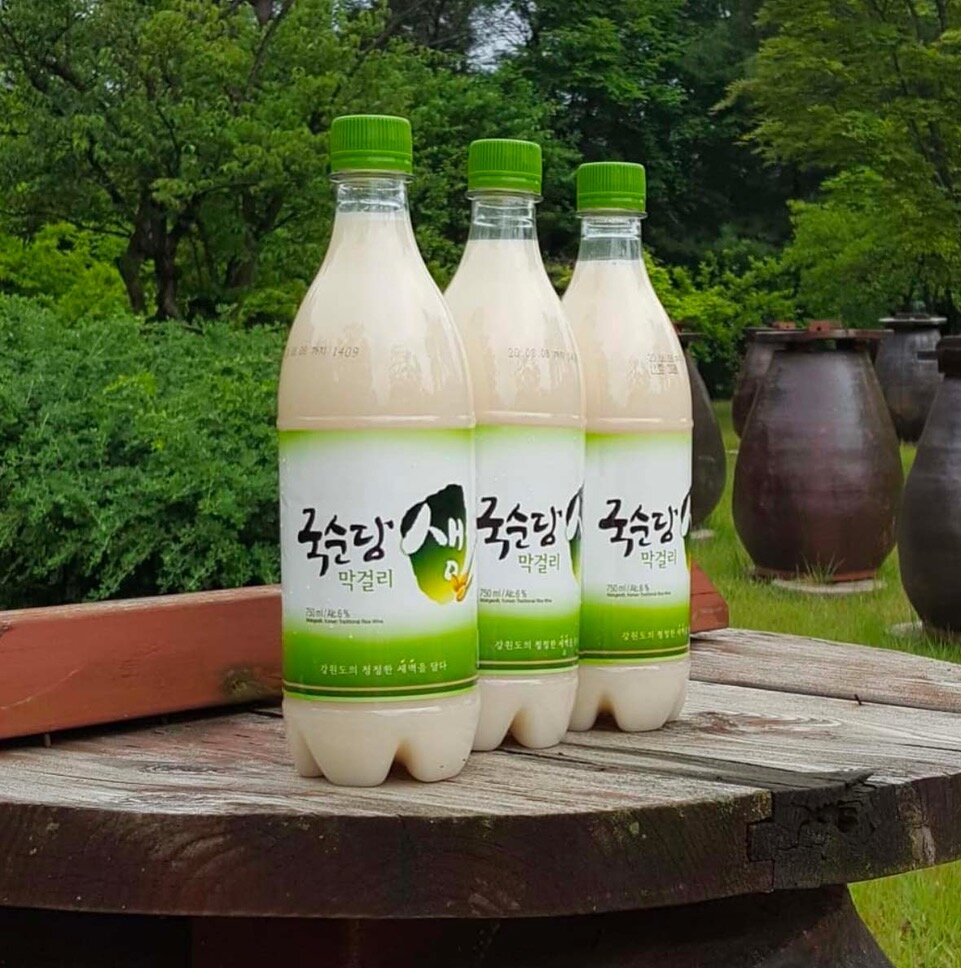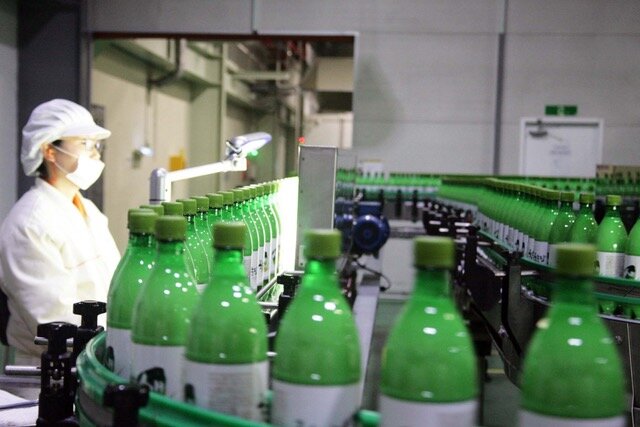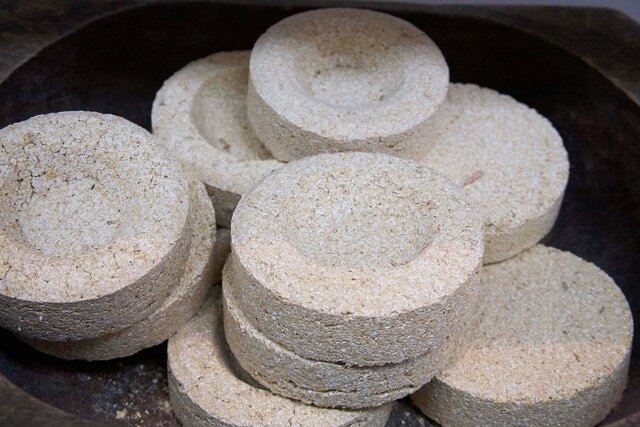Makgeolli 101: What It Is and How to Drink It
Makgeolli. Photo courtesy KookSoonDang
Makgeolli – an Introduction, Food Pairings and Cocktails
To put it simply, makgeolli is a Korean fermented rice alcohol. But the real definition is way more complicated than that. Makgeolli is one of many nongju (farmer’s booze) made by homebrewers throughout Korea for millennia. It’s usually made with three simple ingredients: rice, water and nuruk (a type of fermentation starter cake made from a combination of rice, wheat and barley). In that deceptive simplicity, the complexities of the yeast and the fermentation process can make or break the final product.
What makes makgeolli such a great drink is its versatility. Its naturally occurring light carbonation and subtle sweetness goes well with so many different types of food. It cuts the grease of Korean barbeque, tames the fiery taste of kimchi and balances the pungent ocean flavor of many types of seafood. And it pairs equally well with non-Korean menus.
Unfortunately, it’s not so easy to get the true, traditional, homemade flavor outside of Korea. Most of the makgeolli available in the States is imported in plastic bottles. Due to American import regulations, they have been pasteurized, which stunts the microbacteria, stripping away the complex flavor of the beverage, leaving only the sweetness as a dominant note.
Plus, commercial brewers dilute their wares to make it easier to drink. Commercially sold makgeolli contains around 6-8% alcohol, whereas traditional brews contained about 12-18%. This is because most makgeolli doesn’t travel well. The fermentation that gives it the complexity in flavor also makes it literally explosive when packaged. But if you’re lucky to live in a large metropolitan area, you may be able to find a local purveyor who brews microbatches to sell in their own bar or restaurant.
Makgeolli being bottled. Photo by Cecilia Hae-Jin Lee
Serving suggestions
Makgeolli is always served chilled, sometimes even partially frozen. The traditional presentation is to ladle it out of a clay crock or pour it from a brass kettle into shallow bowls or cups. Before drinking, gently mix the liquid, because the rice usually settles down to the bottom. Be careful when you do. Make sure to uncap the bottle first. Put the cap back on and then shake gently. Then again, uncap slowly to keep the contents from spraying everywhere.
In the U.S., Kooksoondang Saeng Draft Makgeolli (in the 750ml green bottle, typically found in the rice wine section of a store) is my preferred regular brand. It retails for about $5, has an ABV of 6%, and is widely available in Korean (and other Asian) markets and even online. Because it’s pasteurized, it can be stored unopened for up to a year, though I doubt it’ll last that long once you try makgeolli’s smooth easy-going taste.
Upscale makgeolli
More upscale makgeolli might be a bit harder to find, but if you can, it’s worth the search. Sejong Premium Icheon Makgeolli (750 ml, ABV 6%, about $15) is made with fancy rice from Icheon, a region which is said to grow the best rice in Korea.
There are a number of flavored makgeolli available stateside as well, including Kooksoondang’s banana and peach makgeolli (in 750 ml bottles, ABV 6%, about $5). They also have other flavors (like cream cheese and grape) that don’t usually get imported. Hallabong Mandarin Makgeolli (750 ml, ABV 6%, about $15) is a premium brand from Jeju-do, Korea’s famous island known for its mandarin groves. Sejong also makes a chestnut makgeolli (750 ml, ABV 6%, about $15), which has a distinctive nutty flavor.
Nuruk cakes. Photo by Cecilia Hae-Jin Lee
There are also Kooksoondang’s Icing beverages, which are pre-mixed sparkling juice makgeolli cocktails (hey, everyone has RTD these days!). They are available in cans and 10 oz bottles (ABV 6%, about $5). It’s available in three flavors: grapefruit, grape and what they call “candy soda,” which tastes a bit like a sweet lollipop.
Makgeolli in cocktails
Makgeolli by itself works well as a cocktail ingredient. You can make a Makgeolli Whisky Sour with makgeolli, whiskey (or bourbon), lemon juice and simple syrup. Combine all the ingredients in a cocktail shaker and pour over ice.
A fruity makgeolli cocktail can also be made with makgeolli, mascerated raspberries and bokbunja (black raspberry vinegar). You can substitute blueberries and hongcho (blueberry vinegar) in place of the raspberries, as well. For an extra layer, add your favorite herb, like basil, mint or tarragon as a flavoring and a garnish.
However you enjoy your makgeolli, the traditional way is to let the youngest one pour for their elders. Everyone should receive the pour holding the cup with both hands as a show of respect. Raise a glass and say ‘Cheers!’ Or as we say in Korean, ‘Geonbae!’



